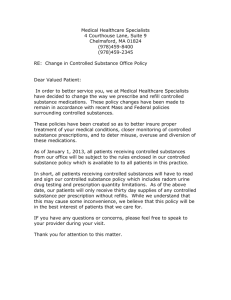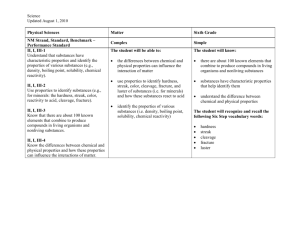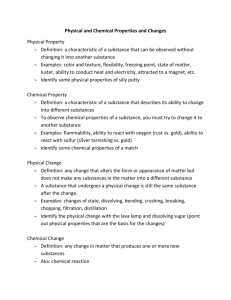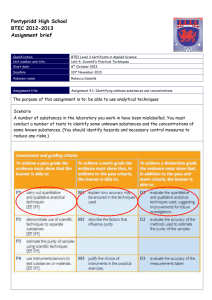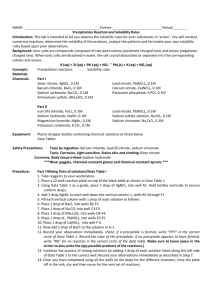Property Physical or Chemical?
advertisement
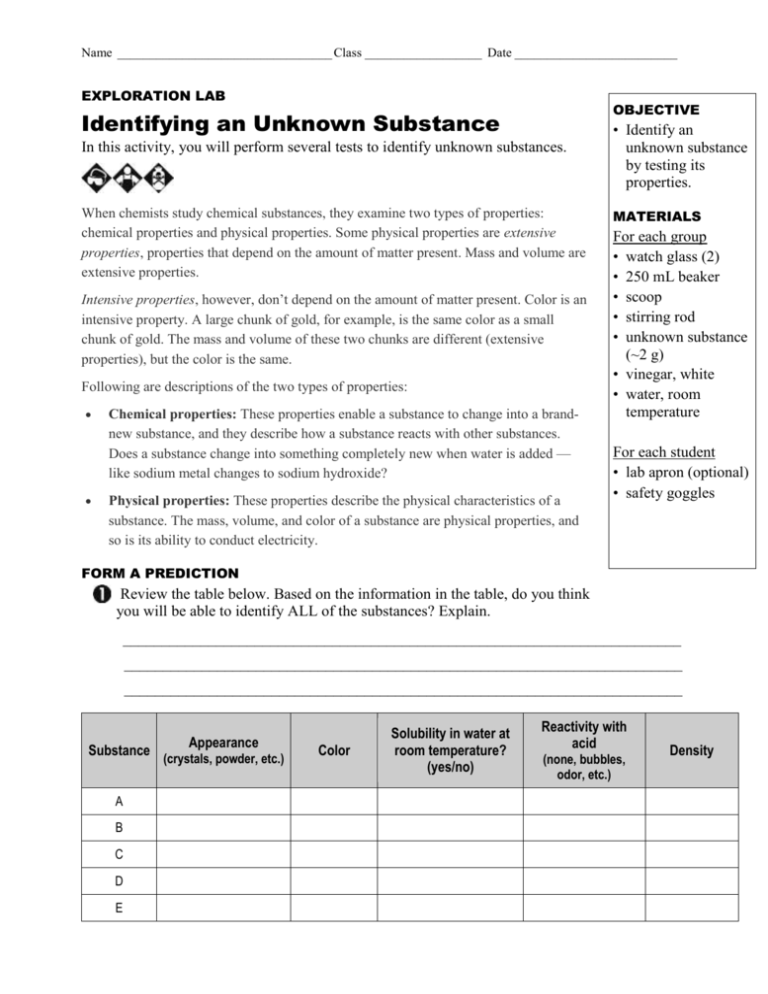
Name _________________________________ Class __________________ Date _________________________ EXPLORATION LAB OBJECTIVE Identifying an Unknown Substance In this activity, you will perform several tests to identify unknown substances. When chemists study chemical substances, they examine two types of properties: chemical properties and physical properties. Some physical properties are extensive properties, properties that depend on the amount of matter present. Mass and volume are extensive properties. Intensive properties, however, don’t depend on the amount of matter present. Color is an intensive property. A large chunk of gold, for example, is the same color as a small chunk of gold. The mass and volume of these two chunks are different (extensive properties), but the color is the same. Following are descriptions of the two types of properties: Chemical properties: These properties enable a substance to change into a brandnew substance, and they describe how a substance reacts with other substances. Does a substance change into something completely new when water is added — like sodium metal changes to sodium hydroxide? Physical properties: These properties describe the physical characteristics of a substance. The mass, volume, and color of a substance are physical properties, and so is its ability to conduct electricity. • Identify an unknown substance by testing its properties. MATERIALS For each group • watch glass (2) • 250 mL beaker • scoop • stirring rod • unknown substance (~2 g) • vinegar, white • water, room temperature For each student • lab apron (optional) • safety goggles FORM A PREDICTION Review the table below. Based on the information in the table, do you think you will be able to identify ALL of the substances? Explain. ________________________________________________________________________ ________________________________________________________________________ ________________________________________________________________________ Substance A B C D E Appearance (crystals, powder, etc.) Color Solubility in water at room temperature? (yes/no) Reactivity with acid (none, bubbles, odor, etc.) Density Name _________________________________ Class __________________ Date _________________________ DEVELOP A PLAN How will you test all of the properties listed in the table? What materials will you use? Develop your procedure below. 1. ______________________________________________________________________ 2. ______________________________________________________________________ 3. ______________________________________________________________________ 4. ______________________________________________________________________ 5. ______________________________________________________________________ 6. ______________________________________________________________________ 7. ______________________________________________________________________ 8. ______________________________________________________________________ 9. _______________________________________________________________________ 10. ______________________________________________________________________ HAVE THE TEACHER APPROVE YOUR PLAN BEFORE MOVING TO STEP 4! EVALUATE THE PLAN Once your teacher has approved your plan, perform the steps you described in Step 3. Record all your observations in the data table. When you are done filling in the data table, get the substance chart from the teacher. The chart will contain the name of all of the substances and their properties (THEY WILL NOT BE IN ORDER!). ANALYZE THE RESULTS Analyzing Data Based on the results of your tests, can you identify ALL your unknown samples? If yes, what are they? If not, why are you unable to identify ALL of them? ________________________________________________________________________ ________________________________________________________________________ ________________________________________________________________________ ________________________________________________________________________ ________________________________________________________________________ _________________________________________________________________________ _________________________________________________________________________ _________________________________________________________________________ Name _________________________________ Class __________________ Date _________________________ Evaluating Predictions Review your prediction from step 1. Was your prediction correct? Why or why not? ________________________________________________________________________ ________________________________________________________________________ ________________________________________________________________________ ________________________________________________________________________ DRAW CONCLUSIONS Applying Concepts According to the table, certain substances have similar appearances, solubility, and reactivity with vinegar and oxygen. What further tests could you conduct to distinguish between these substances? ________________________________________________________________________ ________________________________________________________________________ ________________________________________________________________________ ________________________________________________________________________ ________________________________________________________________________ Classifying Observations List each property of the unknown substances that you observed during this experiment. Then, list whether the property is a physical property or a chemical property. Property Physical or Chemical? Synthesize Information Why would it be useful to know the different physical and chemical properties of substances? ________________________________________________________________________ ________________________________________________________________________ ________________________________________________________________________





